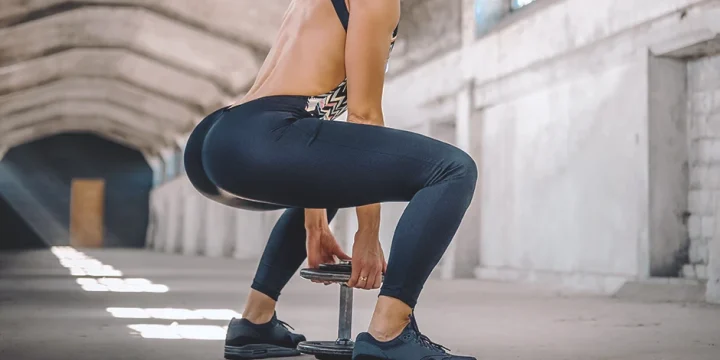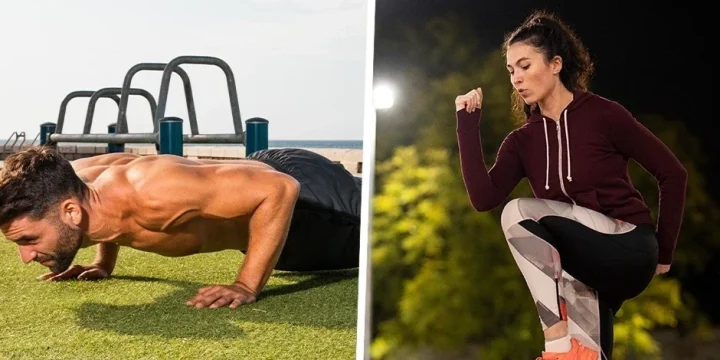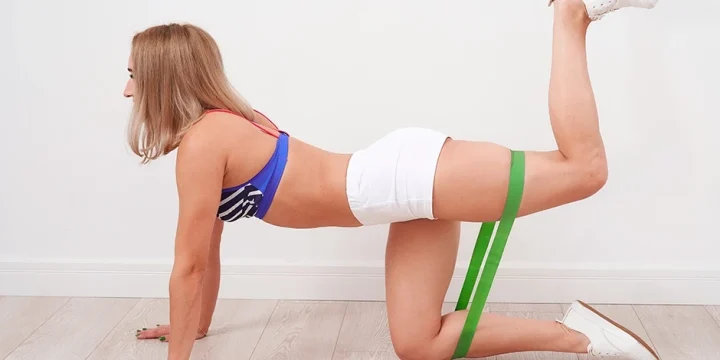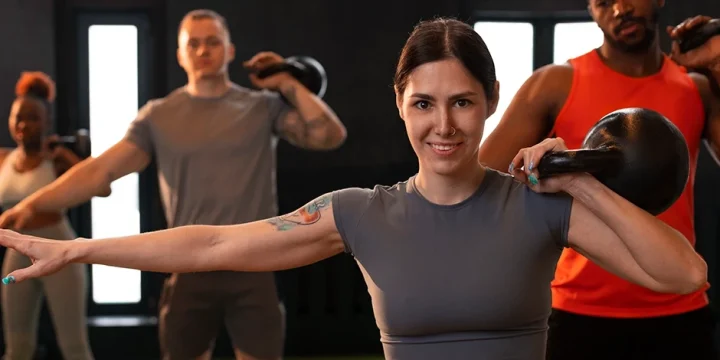Taking your workout outside can help you add variety and excitement to your routine, providing a more enjoyable and cost-effective way to stay active.
Being a personal trainer, one of the most common questions I receive is about an efficient workout routine that can be done outdoors, whether at local parks, open spaces, or even in your backyard.
Based on my experience and consultations with other fitness experts, I have put together an outdoor workout you can engage in while immersing yourself in a green environment.
Quick Summary
- Outdoor workouts enhance fitness routines by incorporating exercises like jumping jacks, high knees, walking lunges, squats, planks, and mountain climbers in natural settings.
- Outdoor workouts offer a variety of benefits, including improved mental health, increased calorie burn, and better cardiovascular fitness.
- Research published on the PubMed website shows that individuals who exercise outdoors spend approximately 30 minutes more doing physical activity per week than those who exercise indoors.
- Personally, I find outdoor workouts more refreshing and motivating than gym sessions, especially with the added beauty of natural surroundings.
The Best Outdoor Workout

Dynamic Warm Up - Jumping Jacks
I start every outdoor session with jumping jacks. They're a simple yet effective way to get my muscles ready.
It can improve your leg muscles’ stability and increase your heart rate [1].
To perform jumping jacks, follow these steps:
- Position yourself by standing with your feet together and allowing your arms to rest naturally by your sides.
- Jump slightly and spread your legs to a little wider than your shoulder width. While in the air, raise your arms above your head.
- Return to the starting position and repeat the exercise until you complete three sets of twenty repetitions.
2. High Knees
High knees have been a game-changer for me, especially when I'm short on time.
This cardiovascular exercise offers a full-body workout, engaging your core, quadriceps, hamstrings, and hip flexor muscles.
To perform high knees, follow these steps:
- Stand tall with your feet hip-width apart.
- Lift one knee towards your chest while simultaneously hopping on the opposite foot.
- Lower the lifted leg back to the floor, and immediately raise the other knee towards your chest while hopping on the alternate foot.
- Keep alternating legs, bringing each knee up towards your chest.
- Repeat the sequence for your desired number of repetitions.
“A lot of people lean too far forward while performing high knees. Doing this restricts your range of motion — you won’t be able to pull your knees up as high — somewhat defeating the purpose of the exercise. It’s also a sign that you aren’t engaging your core.”
- Stephanie Mansour, Fitness Editor
3. Walking lunges
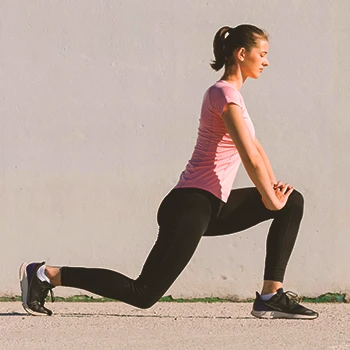
I incorporate walking lunges into my park routines. They're fantastic for targeting my lower body, and I can really feel the difference in my glutes and quads.
To perform walking lunges correctly, follow these steps:
- Stand upright with your feet shoulder-width apart.
- Take a forward step with your right foot, lowering your body until your right thigh is parallel to the floor and your left knee is approximately one inch above the ground.
- Maintain proper alignment by keeping your right knee above your right foot and ensuring your back stays straight.
- Push off with your left foot, bringing it forward to a standing position.
- Step forward with your left foot and repeat the same motion on the opposite side.
Continue alternating legs until you reach the desired number of repetitions.
4. Squats
My clients say that doing squats outdoors, especially on uneven ground, adds an extra challenge to their balance and strength.
Squats are highly effective for developing lower body strength, specifically targeting the quadriceps, hamstrings, and glutes.
To perform this exercise:
- Stand upright with your feet shoulder-width apart.
- Engage your core muscles and gradually lower your body by bending at the knees while simultaneously pushing your hips back.
- Continue descending until your thighs are parallel to the ground. Ensure your back remains straight and your knees are directly above your feet.
- Pause for three seconds, then gradually push through your heels to elevate your body back to the starting position.
- Repeat for your desired number of repetitions.
“Your feet should remain fully on the ground. Be sure the bar is positioned so you don't have to go up on your toes to unrack it. Throughout the lift you are driving up through your heels, but the ball of the foot is also planted. You never want your weight to be all on the ball of your foot or your toes.”
- Elizabeth Quinn, Fitness Editor
Related: How To Do a Bodyweight Squat
5. Planks
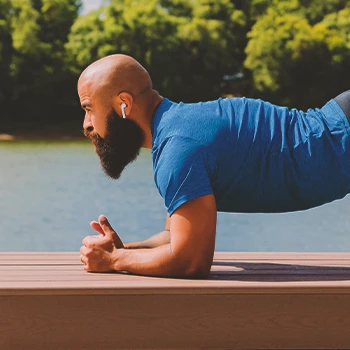
Planks are an exceptional exercise for fortifying your core, targeting key muscles such as your abs, back, hips, chest, and shoulders.
Follow these steps to perform a plank correctly:
- Get in a push-up position, ensuring that your hands are placed shoulder-width apart and your arms fully extended.
- Lower yourself to your forearms, ensuring your elbows are directly over your shoulders.
- Keep a straight line from your head to your ankles, engaging your core muscles, and sustain this position for thirty seconds.
- Slowly lower yourself down to the floor to release the plank.
Related: Does Planking Burn Fat: Everything You Should Know
6. Mountain Climbers
This exercise effectively targets the core, shoulders, and leg muscles.
Mountain climbers are my go-to for a quick cardio burst. I often do them between jogging intervals for an extra push.
To perform mountain climbers, follow these steps:
- Get in a high plank position, extending your arms fully and positioning your hands shoulder-width apart.
- Engage your core muscles by contracting your abs and glutes.
- Lift your right knee toward your torso, ensuring your foot remains off the ground.
- Rapidly switch legs, bringing your left knee toward your torso while extending your right leg back.
- Continue alternating legs in a running motion while ensuring a straight line is maintained from your head to your heels.
- Repeat for your desired number of repetitions.
“A common beginner mistake with mountain climbers is to bounce on your toes as you perform the move. The bouncing might feel like a harder workout, but it actually requires less engagement of your core muscles.”
- Paige Waehner, Personal Trainer
7. Bench Push-Up
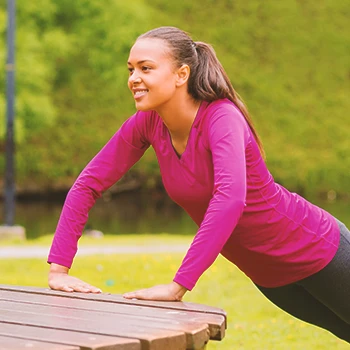
This exercise can help you target the triceps, shoulders, biceps, and chest muscles while enhancing your core stability.
To perform this exercise:
- Put your hands on the edge of a park bench wider than shoulder distance apart.
- Step your feet into a plank position so your hips are in a straight line from your shoulders.
- Lower yourself towards your bench.
- Push back up to return to the starting position.
- Repeat until you reach the desired amount of reps.
8. Cool Down - Downward Facing Dog
This exercise will strengthen and lengthen multiple groups, including the hamstrings, calves, and shoulders.
To perform the downward-facing dog:
- Get on all fours on your mat, ensuring that your wrists are beneath your shoulders and your hips are stacked over the knees.
- Tuck your toes under to bring some awareness to the feet.
- Spread your fingers as wide as possible.
- Push through your fingers and send your hips high to come into a downward dog position.
- Hold the position for 30 seconds.
- To come out of this position, lift your heels and drop down to your chin to return to the tabletop position.
Seasonal Outdoor Workouts Ideas
Here's how you can tailor your workouts for every season, ensuring you stay active and engaged all year round.
Spring
Focus on cardio and endurance-building activities like jogging or cycling amidst blooming nature.
Parks are usually at their most beautiful during this time, offering a scenic backdrop for your workouts. Incorporate bodyweight exercises like push-ups and lunges in a park for a full-body workout.
Summer
Summer workouts are all about staying cool and taking advantage of the longer days. Early morning or late evening workouts can help you avoid the peak heat.
Activities like swimming or water aerobics are perfect for this season, offering both exercise and a respite from the heat. Beach volleyball or sand running can also add a fun and challenging twist to your routine.
Autumn
As temperatures start to drop, autumn is ideal for more intense workouts without the risk of overheating. I found that hiking through trails covered in autumn leaves or cycling through crisp air can be incredibly refreshing.
This is also a great time for outdoor yoga sessions, as the cooler weather helps with heat regulation during more strenuous poses.
Winter
If snow is available, activities like snowshoeing, skiing, or even building a snowman can be great workouts. For areas without snow, brisk walking or jogging in cooler temperatures can be invigorating.
Just remember to layer up to regulate body temperature.
What Are the Benefits of Outdoor Workouts?

The benefits of outdoor activities are improved cognitive function, motivation, bone health, heart rate, and reduced stress.
- Improved cognitive function - Fresh air positively impacts various aspects of one’s well-being. A study on the Nature website has revealed that exercising in natural outdoor environments can enhance cognitive function to a greater extent compared to indoor workouts [2].
- Increased motivation - Exercising outdoors can boost motivation and help maintain consistency in exercise programs, facilitating adherence to your routine. A PubMed study has indicated that individuals who chose to walk outdoors engaged in approximately 30 minutes more exercise per week compared to those who walked indoors [3].
- Reduced stress - A study revealed that individuals with obesity who incorporated outdoor walking into their routine, either in a park or a gym, on alternate days experienced a significant reduction in stress levels and reported greater enjoyment of their exercise compared to when they walked indoors [4].
- Increased heart rate - A study in PLOS Journal demonstrated that even when exercise is physically demanding, it can feel significantly easier and more enjoyable when performed in beautiful surroundings [5].
- Improved mental health - Exercising in urbanized outdoor settings was generally found to be less advantageous for individuals' mental well-being compared to a similar exercise conducted in greener environments such as parks and forests [6].
“When you exercise outside, your ability to consume oxygen and balance CO2 levels internally are increased even more. Because the body now has better gas exchange rate, it burns more calories compared to both lounging around and exercising indoors.”
- Shannon Farrell, Health Editor
Related posts:
- How to Build an Outdoor Home Gym
- Track Workouts for Beginners
How to Plan an Outdoor Workout?

To effectively plan an outdoor workout, follow these steps:
- Choose a suitable location - Select an outdoor space, such as a park or trail, that offers sufficient room for your desired exercises and activities.
- Decide on the workout type - Determine the specific type of workout you want to engage in, whether it's high-intensity interval training (HIIT), trail running, yoga, or any other preferred activity.
- Check the weather conditions - Before your workout, check the current weather conditions to ensure it is safe and suitable for exercising outdoors.
- Determine your equipment needs - Assess the equipment necessary for your workout, such as resistance bands, top exercise mats, weights, or other tools that align with your planned exercises.
- Create your workout plan - Design a well-rounded workout plan incorporating cardiovascular and strength exercises. Remember to include a proper warm-up and cool-down routine.
- Consider safety precautions - Take into account any potential risks associated with the workout location, such as uneven terrain, wildlife, or low-hanging branches. Stay alert and exercise caution during your outdoor session.
- Stay hydrated - Remember to bring an ample water supply to keep yourself hydrated throughout the workout.
- Incorporate strength training exercises - Enhance your outdoor workout by incorporating strength training exercises. For instance, you can integrate lunges into your routine after a 30-minute walk, performing around 15 repetitions of lunges.
FAQs
Can You Build Muscle With Outdoor Workouts?
Yes, you can build muscle with outdoor workouts. However, simply going for walks in the park may not be required to stimulate significant muscle growth. Bodyweight exercises, interval training, and resistance training that precisely target and challenge your muscles can all help you build muscle mass effectively.
Is Outdoor Exercise Risky?
No, outdoor exercise isn’t risky and is considered safer than indoor exercise. Research consistently supports that the greater risks are associated with indoor surroundings. While outdoor activities do carry some degree of risk, it is significantly reduced in comparison.
References:
- https://www.atlantis-press.com/article/125967530.pdf
- https://www.nature.com/articles/s41598-022-26093-2
- https://pubmed.ncbi.nlm.nih.gov/22846594/
- https://www.frontiersin.org/journals/psychology/articles/10.3389/fpsyg.2021.728826/full
- https://journals.plos.org/plosone/article?id=10.1371/journal.pone.0177719
- https://iaap-journals.onlinelibrary.wiley.com/doi/10.1111/aphw.12353
About The Author
You May Also Like
